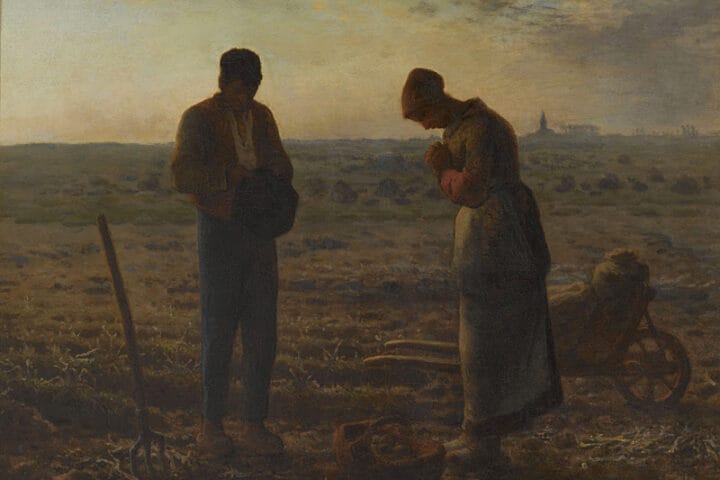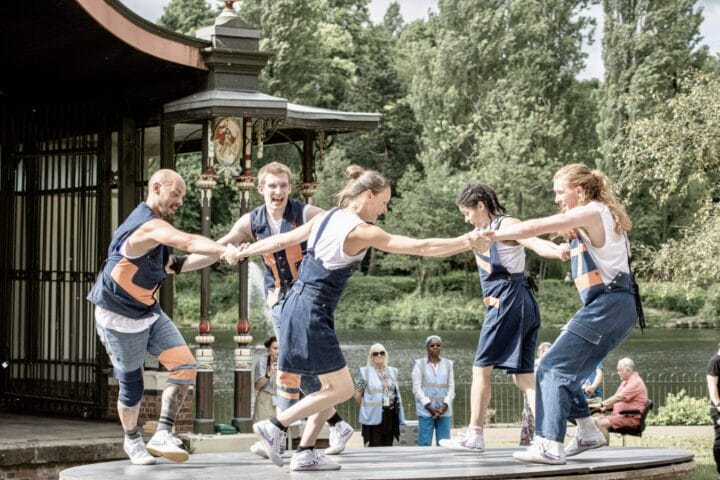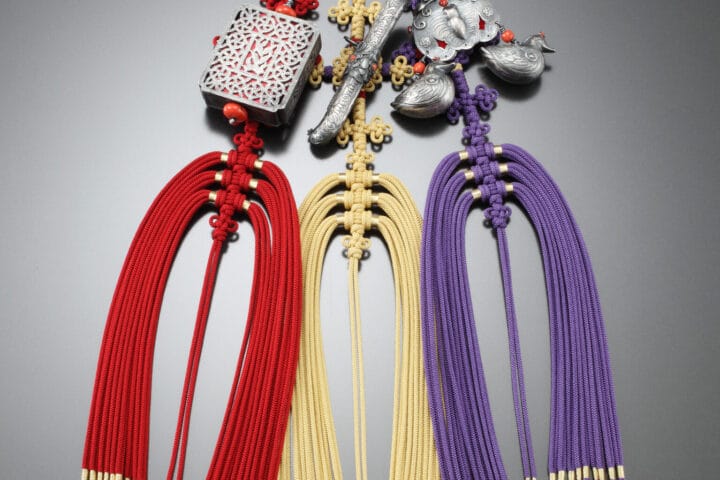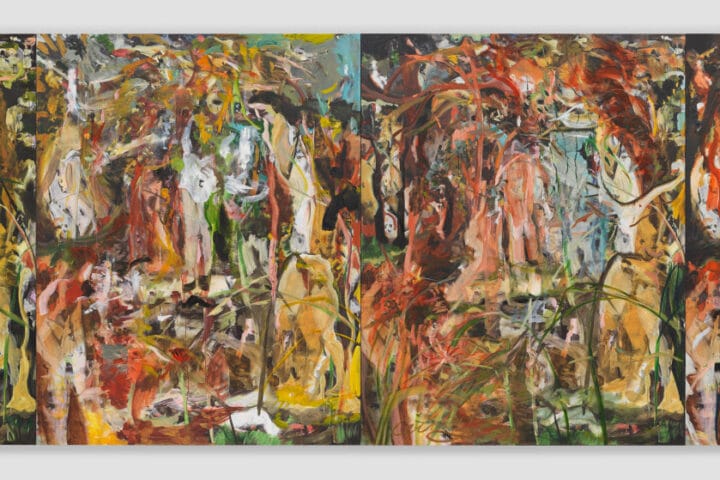Portraiture is where Xie Nanxing (b. 1970, Chongqing) is at his most playful and experimental. It is, he suggests, the soil that helps his ideas to grow. His most recent portraits display many of the paradoxes and contradictions that are typical of his practice: an engagement with art history that is both deeply academic and mischievously irreverent; the use of highly personal subject matter to explore complex philosophical questions about the nature of representation; a commitment to the most traditional of genres as a way of bringing painting into new territory.
Though he occasionally made portraits, particularly self-portraits, in the 1990s, it is in the past ten years that portraiture has become a major part of Xie’s practice. He is not interested in a realistic depiction of a subject, but rather in exploring an aspect of their personality, their psychological state, the peculiarities of their personal life or perhaps of their relationship with him. He does not aim to capture a subject’s essence, but rather their multiplicity and their contradictions.
The subjects of Xie’s most recent portraits are either people that have a significant presence in his life or ideas that are important to him and which he felt could be explored through the logic of portraiture. Something about his subjects, Xie says, must suggest an idea for a painting, though exactly what this means is still mysterious to him – he describes painting as a very precise operation, somehow more akin to a mathematical calculation than to an expression of feelings.
The large diptych X (2021), perhaps the work that least resembles traditional portraiture, offers the viewer the clearest insight into Nanxing’s approach. As with Portrait of Big X (2018) from his last exhibition at Thomas Dane Gallery, we can reasonably assume that X is a self-portrait. We might deduce this even without the title, since the letter ‘X’is clearly painted into the left-hand panel. This ‘X’seems to rhyme with the cobweb in the upper left corner, suggesting an affinity between the artist and the many spiders that populate the painting. While the spider, as Emily Dickinson wrote, has never been employed as an artist, ‘his surpassing Merit/ Is freely certified’.
The diptych’s right-hand panel contains a muted yet explicit reference to René Magritte’s 1933 painting La condition humaine, in which Magritte places a painting of a landscape directly in front of the landscape which it represents. It is clear that the relationship between the painting and the external world, as well as the viewer’s relationship with each, are key questions for Xie Nanxing.
Several of Xie’s new portraits use a process which has long been an essential part of his practice, in which a loosely-painted oil sketch is heavily backlit and then photographed such that the image is distorted and light appears to emerge from it. This process is most strikingly at work in the painting-within-a-painting in P (2021), which is signed with that same initial.
In the past Xie has given his portraits titles such as ‘Someone’s Portrait’ or ‘Portrait of N’, but here the portraits are simply G, P, X or U. The anonymity of the previous approach is conserved but slightly modified, both to open up our readings of the work and perhaps also to indicate that here the portraits are conceived as quasi-subjects in their own right – Hello, Portrait!
Xie Nanxing (b. 1970, Chongqing) lives and works in Beijing and Chengdu, China. He has exhibited widely internationally with solo exhibitions at Petzel, New York (2022), Galerie Urs Meile, Beijing (2020, 2015, 2008); Thomas Dane Gallery, London (2019); Ullens Center for Contemporary Art, Beijing (2018); Kunstverein Hamburger Bahnhof (2005); Manchester Art Gallery (2003); and Pulitzer Gallery, Amsterdam (1998). In 2023 he was nominated for the Sigg Prize for which he will exhibit at M+, Hong Kong later this year.
Recent and notable group exhibitions include: Beijing Biennale (2022); Art Museum of Sichuan Fine Arts Institute, Chongqing (2021); Song Art Museum, Beijing (2020); Hive Center For Contemporary Art, Beijing (2020); The Warehouse Dallas (2020); Württembergischer Kunstverein Stuttgart (2019); MAK Museum für Angewandte Kunst, Vienna (2019); Casa Cavazzini, Udine (2017); Red Brick Art Museum, Beijing (2016); Museum of Contemporary Art Chengdu (2016); Today Art Museum, Beijing (2106); Shanghai 21st Century Minsheng Art Museum (2015); OCT Contemporary Art Terminal (OCAT), Shenzhen (2014); Gerhard Richter and the Disappearance of the Image in Contemporary Art, Centro di Cultura Contemporanea Strozzina (CCCS), Palazzo Strozzi, Florence (2010); Painting on the Move, Kunsthalle Basel (2002); Documenta XII, Kassel (2007); and d’APERTutto, the 48th International Art Exhibition – La Biennale di Venezia (1999).
Thomas Dane Gallery
3 and 11 Duke Street St James’s, St. James’s, London SW1Y 6BN, United Kingdom











